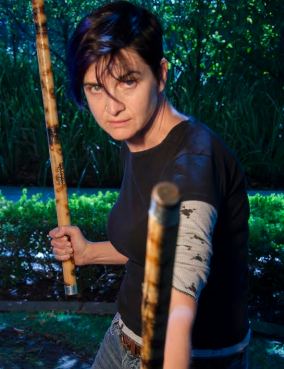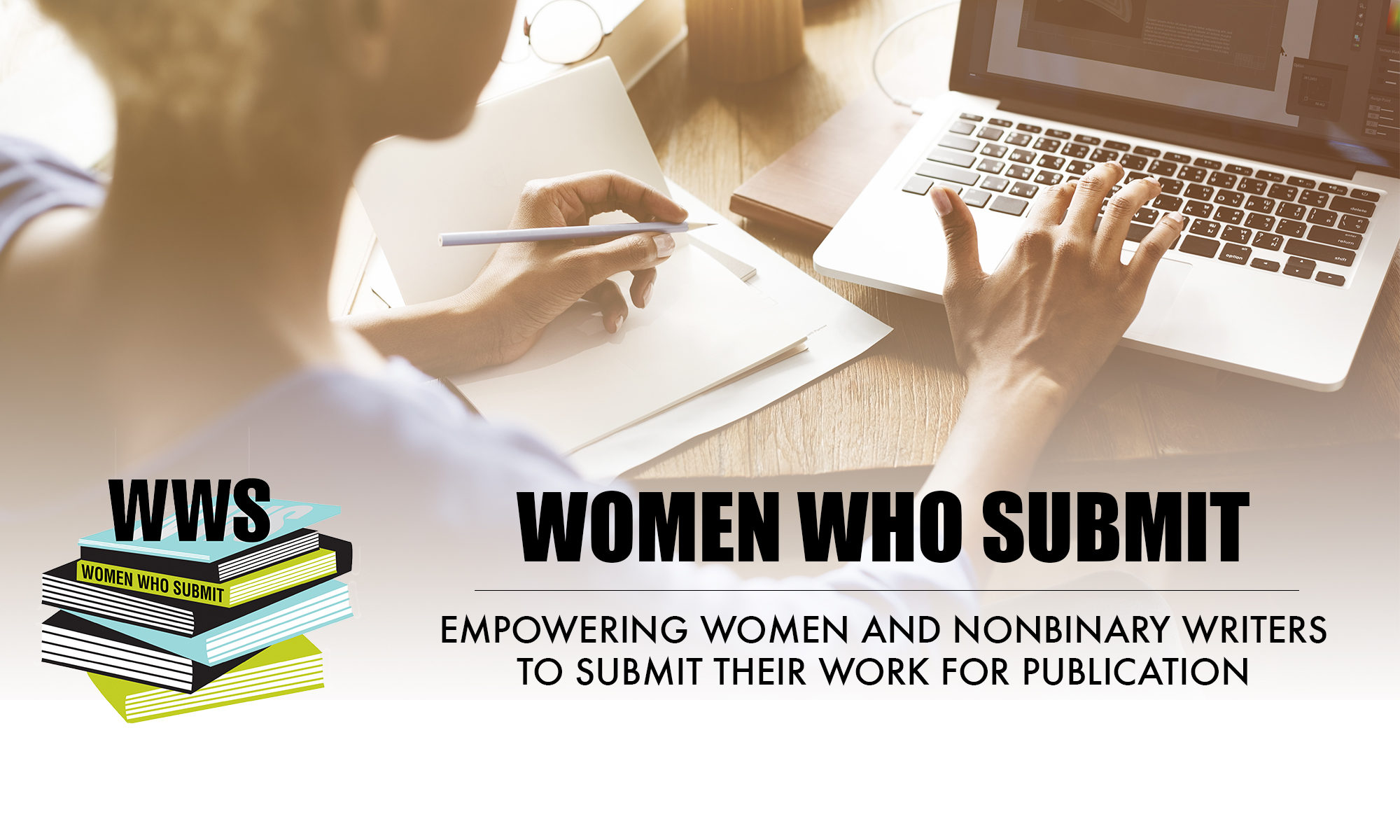Saturday, November 5th Jay O’Shea, a martial artist and Dance Studies professor at UCLA, will be leading the second workshop in the WWS Fall Workshop Series: On Movement and Writing with Jay O’Shea. She recently offered a Ted Talk on the benefits of physical play and games with a focus on process versus winning, and of course fun.
With a unique point of view, O’Shea’s workshop is sure to shift participants’ stories and characters from the mind to their hands and feet. As O’Shea describes, “In this workshop, we treat movement as central, seeing it as a place where character, narrative arcs, and imagery can emerge in a different, sometimes more vivid, way than they do through dialogue and description.”
O’Shea writes fiction, non-fiction, and academic pieces, and below she shares with our WWS community some strategies for revision, submission, and rejection.
WOMEN WHO SUBMIT: How has movement been in important to your work?
JAY O’SHEA: Like most writers, I’ve always been a scribbler, and I couldn’t say when I started writing. I’ve also always had a physical practice: dance, yoga, rock climbing, martial arts. I spent much of my young adult life trying to figure out whether I most wanted to write or to dance. I found a way to join my passions, becoming a dance scholar and writing about dance in its historical, cultural, and political contexts. Only after finishing my PhD did I realize that I was different from other academics in that writing was not only a means to an end but a craft that I cared deeply about in itself.
I started writing fiction and general non-fiction, thinking it was wholly separate from my academic writing, and gradually came to understand that one commonality of nearly all experience is movement. People move, animals move, even inanimate objects move. Understanding how to invoke that movement in writing and seeing what that movement reveals about character, conflict, and intent became central to how I write.
WWS: What is a book that has been instrumental in your development as a writer?
JO’S: I love retellings (and am working on a retelling novel) so Zadie Smith’s On Beauty was particularly influential. In relationship to movement and writing, Susan Schorn’s Smile at Strangers: And Other Lessons in the Art of Living Fearlessly evokes physicality beautifully and finds compelling ways of connecting kinetic action to larger issues and themes.
WWS: When did you choose to take your writing seriously, and what or who helped you in that pursuit?
JO’S: Writing my PhD dissertation showed me how much I loved the practice of writing and how writing can only be completed, paradoxically, by attending to the process and not the outcome. I wrote that dissertation under some duress: I had started a very labor-intensive academic job, one that was notorious for sucking people into a whirlpool of teaching and administration that overtook their writing. In addition, I had just moved to London. It was January so it was dark and rainy nearly all the time, and my housemates were a bunch of club kids who partied all weekend as I sat at my computer.
Generally, I don’t think fear is a terribly good motivator but, in this case, it made for an efficient taskmaster. I saw my writing as a debt of honor; sitting at the computer everyday was a promise that couldn’t be broken no matter what.
For reasons I can’t explain, that process showed me that I wanted to write for audiences beyond academic ones.
My dissertation mentor was hugely helpful in showing me to foreground the practice of writing and I still follow some of her advice to this day. I also read a book called Becoming a Writer by Dorothea Brande. (The phrase “debt of honor” as applied to writing comes from Brande.) It was written in the 1930s but most of the insights still apply.
WWS: Do you ever have an issue with confidence in your writing? What strategies do you have for conquering your inner nay-sayer?
JO’S: Like most writers, I veer between thinking my writing is terrible and thinking it’s terrific; the effort is to find the space in between where I see the merits and the flaws of the writing and can address them effectively. I picked up a few strategies from Brande and one of them is to separate the creative brain and the analytical brain or the internal writer and the internal editor; Brande’s advice is, when writing, just write, don’t critique, criticize, or analyze.
Printing, for me, becomes a kind of boundary; once I hit the print button, I become an editor and I can cut, add, and rewrite with almost no attachment to the words or the process that created them.
The other strategy is to write as early in the morning as I can so I’m writing before my self-doubt has woken up.
WWS: What do you look for when deciding a piece of writing has gone from drafts to submission-ready?
JO’S: I find that I reach a point where my editorial efforts bounce off the manuscript. There seems to be no further way in. That’s either the point at which the piece is done or the point at which it needs another reader. Sometimes a beta reader opens up a whole new angle on a piece, accessing something I couldn’t see, at which point the process begins again. Eventually, the efforts of everyone, including editors bounce off the piece and that’s when I know it’s truly done.
WWS: What is your number one piece of advice for people submitting their work for publication or other opportunities?
JO’S: Submit widely and frequently but also with an eye for the feedback that comes in, regardless of the form it takes. An editor or agent may not have the time or the inclination to give detailed feedback but that doesn’t mean that you can’t learn something from rejection and acceptance alike. Figuring what works and why is a central part of the writer’s task and that’s as true for submission as for creating.
WWS: What strategies do you have for coping with rejection?
JO’S: I wrote a blog post for Women who Submit called “The Wisdom to Know the Difference.” In it, I suggested that writers benefit from figuring out when rejection is arbitrary and when it’s caused by substantive flaws in the writing that need to be addressed. Sometimes writing gets rejected because it just doesn’t resonate for an agent or editor and sometimes it gets rejected because it’s just not ready for publication. Knowing when to take a rejection as a cue to revise and edit and when to take it as a cue to keep submitting can make all the difference between a satisfied and tormented writing life.
Of course, taking my own advice is a different matter altogether… Particularly difficult for me is when a piece is done but I’m having trouble finding the right home for it. It can take a lot of research and a lot of querying to find a right home and, like all writers, that’s time I’d rather spend writing. But that’s where groups like Women who Submit come into it – creating space and support for what is often the least invigorating part of the writing process.
 Martial artist and author Jay O’Shea lives and works in Los Angeles. A Professor of Dance Studies at UCLA, she recently offered a TED talk, entitled Beyond Winning, which focuses on the individual and societal benefits of physical play. She has written and edited several books on dance; her essays have been published in three languages and six countries. Her short fiction has appeared in Bartleby Snopes, Toasted Cheese, and in the anthologies Bloody Knuckles, Death’s Realm, and The Female Complaint. She is currently completing a non-fiction manuscript entitled Risk, Failure, Play: What Martial Arts Reveals about Proficiency, Competition, and Cooperation.
Martial artist and author Jay O’Shea lives and works in Los Angeles. A Professor of Dance Studies at UCLA, she recently offered a TED talk, entitled Beyond Winning, which focuses on the individual and societal benefits of physical play. She has written and edited several books on dance; her essays have been published in three languages and six countries. Her short fiction has appeared in Bartleby Snopes, Toasted Cheese, and in the anthologies Bloody Knuckles, Death’s Realm, and The Female Complaint. She is currently completing a non-fiction manuscript entitled Risk, Failure, Play: What Martial Arts Reveals about Proficiency, Competition, and Cooperation.

